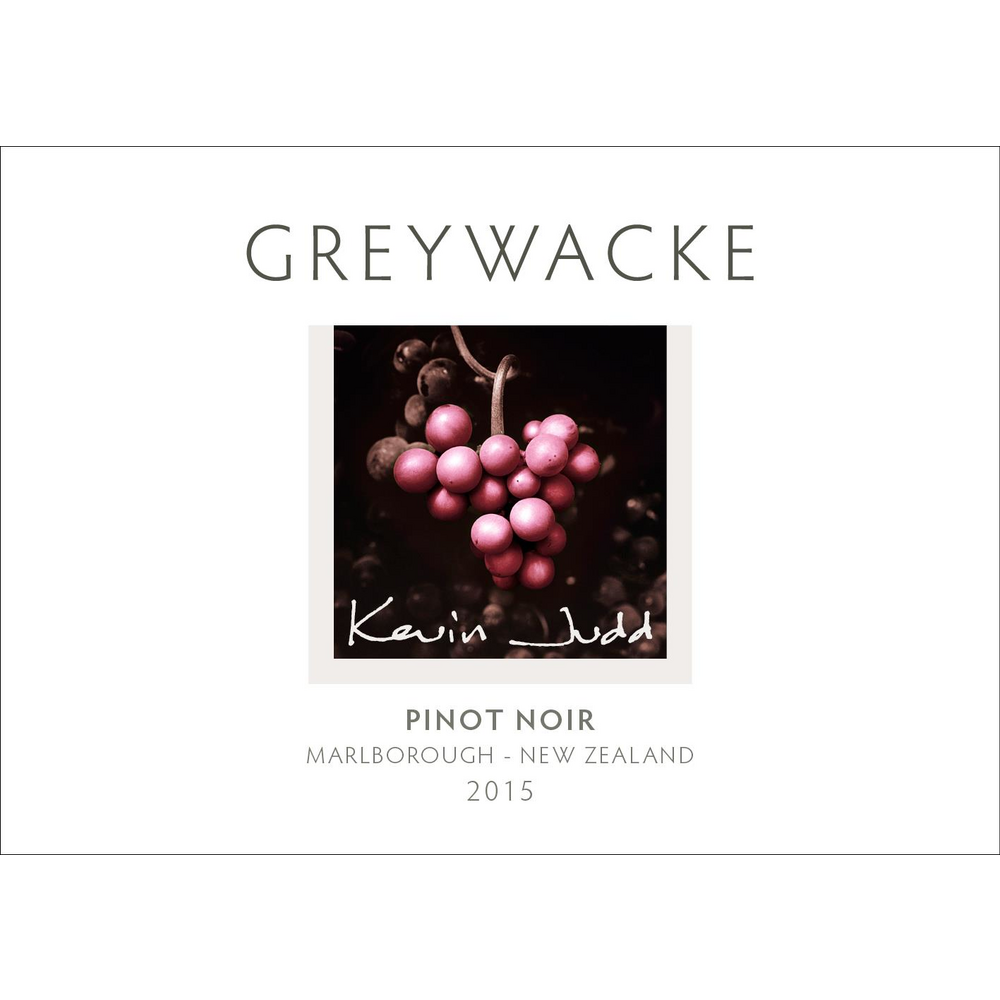Greywacke Marlborough Pinot Noir 750ml Greywacke
$ 44,99 $ 26,99
Description
VITICULTURE: All fruit was grown in Marlborough’s Southern Valleys and principally sourced from the Yarrum Vineyard situated on the Brancott/Ben Morven ridge. Here, the wind-blown loess soils are comprised of clay-loams with varying degrees of gravel content. The various source blocks are cultivated to a mixture of Pinot Noir clones, predominantly the Dijon clones 115, 777 and 667, with smaller parcels of UCD5 and AM 10/5. The vineyards are all hillside plantings trained to two-cane VSP (vertical shoot positioning). WINEMAKING: The grapes were hand harvested and chilled overnight prior to hand sorting. Most of the fruit was then de-stemmed into open-top fermenters, the majority of fermentations with partial whole bunch inclusion. The fruit was allowed to soak on skins prior to the onset of indigenous yeast fermentation, then hand plunged daily. After fermentation the wine was pressed, racked and filled to French oak barriques (40% new). All individual clones were aged in barrel separately for eighteen months, prior to blending. TASTING NOTES: Deeply colored and oozing rich dark fruit – a virtual bowl of ripe black cherries, blackberries topped with a dollop of grandma’s homemade plum jam. An opulent interpretation of Marlborough Pinot layered with evocative fragrances of cloves, star anise, tea smoke and a hint of gaminess. The palate is generous with ripe fruit, fine tannins and a delicious spicy finish.WINEMAKER: Kevin Judd
Producer Description
FOUNDED: 2009WINEMAKER: Kevin JuddCLIMATE: Relatively cool maritime, marked diurnal temperature variations with a long, dry, sunny growing seasonPROFILE: One of Marlborough’s pioneering winemakers, Kevin Judd’s appreciable career is intrinsically linked with the global path of New Zealand Sauvignon Blanc. Kevin’s personal venture, Greywacke (pronounced “grey-wacky”), was unveiled in 2009, fulfilling a long-held dream for himself and wife Kimberley. Named after New Zealand’s prolific bedrock, Greywacke was originally adopted as the name of the Judds’ first vineyard in Rapaura, whose soils had an abundance of these river stones. Now living in the Omaka Valley overlooking Marlborough’s striking patchwork of vines, Kevin sources fruit from mature vineyards in the central Wairau Plains and the Southern Valleys. Alongside winemaking, Kevin’s talent for photography has seen his evocative images appear in countless publications worldwide, and inevitably, take pride of place on the labels of his solo winemaking venture — the synthesis of his dual passions.VITICULTURE: Bound by the Pacific Ocean to the east and towering mountain ranges to the north, this north-eastern corner of the South Island boasts a broad alluvial plain and steep valleys of favorable northerly aspect. In cool, sunny conditions, Marlborough grapes enjoy a long, slow, ripening period with marked diurnal temperature swings that build intensity, retain structure, and enhance color development. The diverse collection of soils has a great impact on style and quality, and while New Zealand does not have a designated national rock, if one were chosen it would undoubtedly be greywacke. Kevin sources fruit from mature, sustainably farmed viticultural sites in the central Wairau Plains and Southern Valleys, collaborating with growers on organic initiatives, the use of cover crops, under-vine weeding and composting, as well as yield-restricting techniques and intense canopy management regimes.WINEMAKING: The wines of Marlborough are known worldwide for their precision, intensity, and distinctiveness, bequeathed by an extraordinary climate and a diverse collection of soils. The expression of unique sites within this distinguished environment lifts the wines of Greywacke to another level. Kevin takes a low-intervention approach to winemaking in order to coax the finest nuance of individuality from each hand-selected vineyard parcel, while maintaining the aromatic intensity for which Marlborough is renowned. Purity of varietal expression is a foregone conclusion in the fruit Kevin works with; indigenous yeast are then left to run their course in new and older French oak barriques, ensuring ample texture and complexity in these compelling wines. Already garnering worldwide acclaim, they show a common thread of layered concentration, fine structure and invigorating freshness.
Quick Shipping and Professional Packaging
We offer a broad range of shipping options thanks to our long-running partnerships with UPS, FedEx and DHL. Our warehouse staff are educated to pack your items exactly as per the specifications that we supply. Your items will undergo a thorough inspection and be securely secured prior to being shipped. We ship to thousands of customers each day from multiple countries. This is a sign of our determination to become the largest online retailer worldwide. Both Europe as well as the USA have distribution and warehouse centers.
Please note that orders with more than one item will be given a processing time according to the specific item.
Prior to shipping, our team will perform an exhaustive inspection of the items you purchased. Today, the majority orders will be shipped within 48 hours. The delivery time is estimated to be between three and seven days.
Returns
The stock is constantly changing and cannot be fully controlled by us due to the involvement of several different parties, such as the factory and our warehouse. The actual stock can change at any moment. Please be aware it's possible your order may become unfulfilled when you have placed the order.
Our policy is valid for a period of 30 days. If it's been more 30 days since you purchased your item and we're unable to offer you a full refund or exchange.
You are able to return an item when it's unopened and is in the same condition when you first received it. It must also be in the original packaging.


































